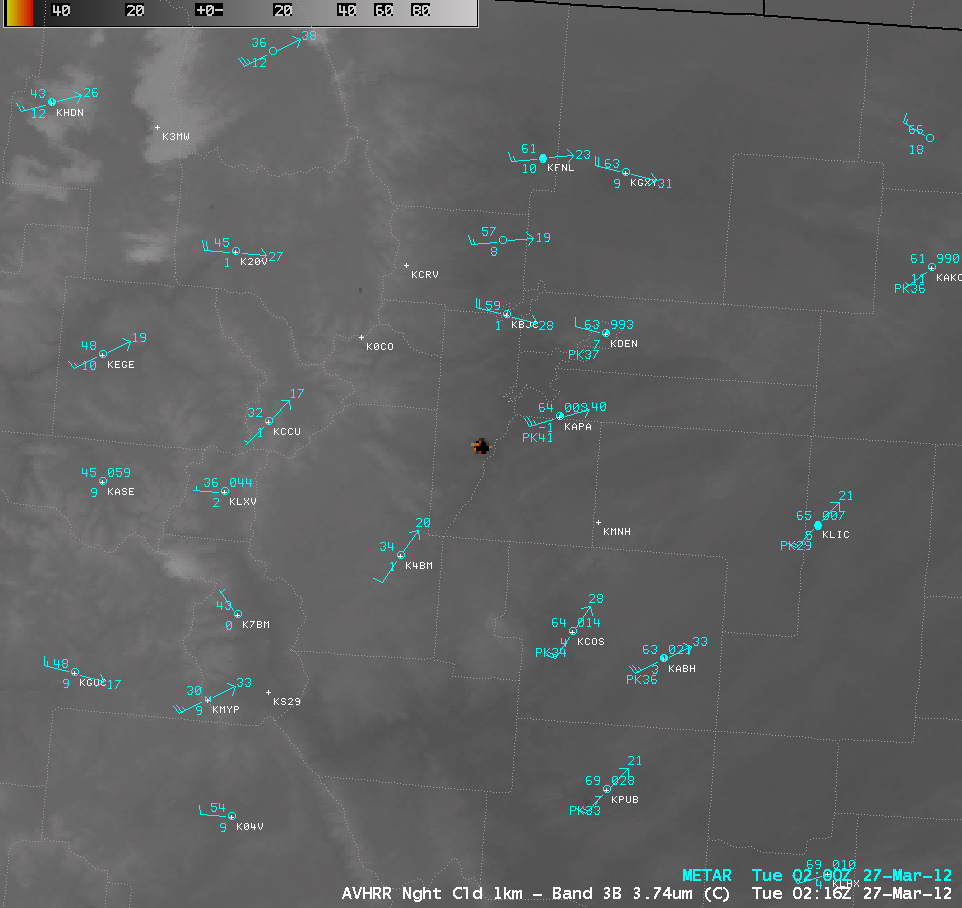
[ Archive ]

 |
ASPB and CIMSS Weekly Report
[ Archive ] |
 |
IN THE PRESS:
ITEMS FOR THE ADMINISTRATOR:
ITEMS FOR THE ASSISTANT ADMINISTRATOR:
ITEMS FOR THE OFFICE DIRECTOR, STAR:
WIGOS Implementation Plan Meeting: A special task team of the World Meteorological Organization (WMO) Intercommission Coordination Group on the WMO Global Integrated Integrated Observing System (ICG-WIGOS) held a meeting in Geneva, Switzerland, 26-30 March 2012. Jeff Key (STAR/ASPB), participated. The objective was to produce a complete WIGOS Implementation Plan. (J. Key, E/RA2, 608-263-2605, jkey@ssec.wisc.edu)
UNESCO Meeting: Jeff Key and a WMO colleague visited the
United Nations Educational, Scientific, and Cultural Organization
(UNESCO) in Paris on 30 March to discuss UNESCO's participation in the
new Global Cryosphere Watch (GCW) initiative. UNESCO will contribute in
the areas of glacier monitoring and cold ocean studies. (J. Key, E/RA2,
608-263-2605, jkey@ssec.wisc.edu)
IPCC Special Report Launched: The IPCC Special Report on Managing the Risks of Extreme Events and Disasters to Advance Climate Change Adaptation (SREX) was officially launched on 28 March 2012. Jim Kossin (NCDC/RSAD) served as a Lead Author on Chapter 3 of the report; “Changes in Climate Extremes and Their Impacts on the Natural Physical Environment” and as a Contributing Author on Chapter 9, “Case Studies”. The launch marks the culmination of an assessment and writing process that began in 2009. (J. Kossin, NCDC, 608-265-5356)
ITEMS FOR THE DIVISION CHIEF, CoRP:
Risk Modeling Workshop Attended: Jim Kossin (NCDC/RSAD) attended a workshop on 20-22 March in Hamilton, Bermuda. He was among a team of five scientists invited to interact with NOAA stakeholders in the insurance, re-insurance, and risk modeling communities. The goal of the workshop was to form an assessment of the validity of the latest RMS hurricane risk model (RiskLink v11.0) and identify/quantify uncertainties. The RMS model is widely used to establish insurance rates in the U.S. The invited scientists represented NOAA, Florida State University, and the London School of Economics. (J. Kossin, NCDC, 608-265-5356) (Click image to enlarge)
(Click image to enlarge)VISITORS:
NEXT WEEK:
LOOKING AHEAD:
| Archived Weeklies Page | Submit a report item |